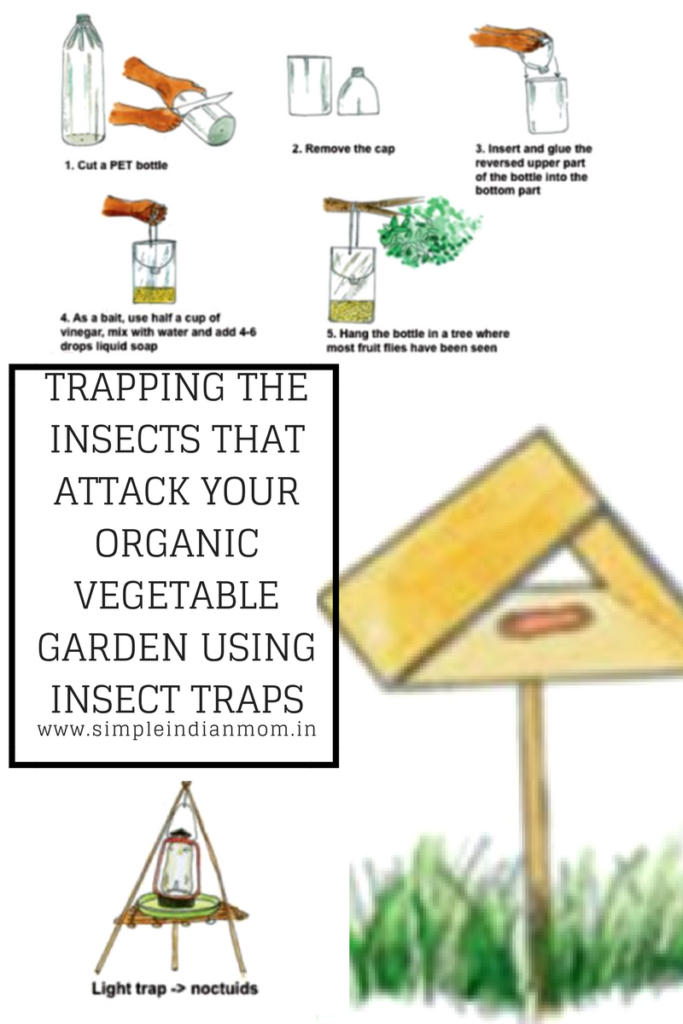Blog
Trapping The Insects That Attack Your Organic Vegetable Garden Using Insect Traps

Trapping The Insects That Attack Your Organic Vegetable Garden Using Insect Traps
When you speak of organic vegetable garden, you need to make sure that you do not use any kind of chemical, even when you know your vegetable is being attacked, instead you can trap those insects using insect traps.
In fact traps in organic farms give you the first indication of the presence of pest in the fields, in your vegetable garden, pests would not be in huge numbers as they would be in a farm. Hence trapping them itself will effectively control them.
There are many types of traps you can use, which are mainly classified into two types.
- Passive traps – These traps do not have any kind of luring components. examples – Pit Fall traps, ground Sticky traps, water traps, flight interception traps.
- Active Traps – These traps use some kind of components like colour, pheromones, size and so on to lure the insect towards them. examples are pheromone trap, light trap, fly trap and so on.
Lets see these traps one by one so that you can decide upon the ones you can use in your organic vegetable garden.
-
Pheromone Trap
Pheromones are chemicals that are secreted by insects to attract and stimulate one gender or all gender of its kind. Thus you know which insect you specifically are targeting.
For example the pheromones of armyworm or cutworm when placed in the vicinity of your vegetable crops easily attract the females and prevent them from multiplying further.
Advantages of Pheromone Traps
- They are affordable
- easy to install
- non toxic
- can be used for long periods
2. Light Traps
Light Traps are used to monitor the activity of quite a huge range of insect species. When there is no known pheromone for a species of insects, light traps are the next option.
They are best for nocturnal insects.
They are not selective of insects and hence may harm the advantageous insects too, that why I generally do not personally recommend light traps.
Advantages of light trap
- Easy to construct and deploy
- Not easily damaged (by beetles)
Quick DIY Organic Pesticides You Can Make At Home For Your Organic Vegetable Garden
3. Pitfall Traps
Pitfall traps are made by digging the soil and placing a container in it. the container remains open so that the crawling insetcs fall into it. You can make you own pitfall trap using plastic bottle.
Fill half the bottle with detergent and water and place well equal to the surface of soil so that insects get fooled to fall into them and not walk around the surface.
eg for ground beetles.
4. Bait Traps
Fruit flies, the ones which generally pester us in summers is best caught by bait traps.
PE-bottles with small holes can be half-filled with water, some cattle urine, fruit flesh or a small dead fish and a drop of detergent or soapy water.
You can hand these bottles in trees and check once in 3 days.
5. Shelter Traps
Shelter Traps provide a cool, moist and dark refugee for the night loving insects. They are easy to install and work best to estimate and eliminate pests like slugs.
You can deploy more number of these shelter traps along your organic vegetable garden so that you would have easy minimisation of pests.
6. Sticky Traps
For aphids and leafhoppers, you can easily for for the sticky traps. These traps are mostly yellow cards coated with adhesive. For thrips – blue cards are used and for white flies yellow orange cards are used.
Where do you buy these cards, well I for one would always say go to the nearest government agricultural department office, you have provisions for all these. If there is an Agricultural University near you, that will be the best place to get guidance for the same.
Protecting Organic Terrace Garden- From Pest, Disease and More
Out-Jump Your Nutritional Intake – Microgreens – Do You Know Them

